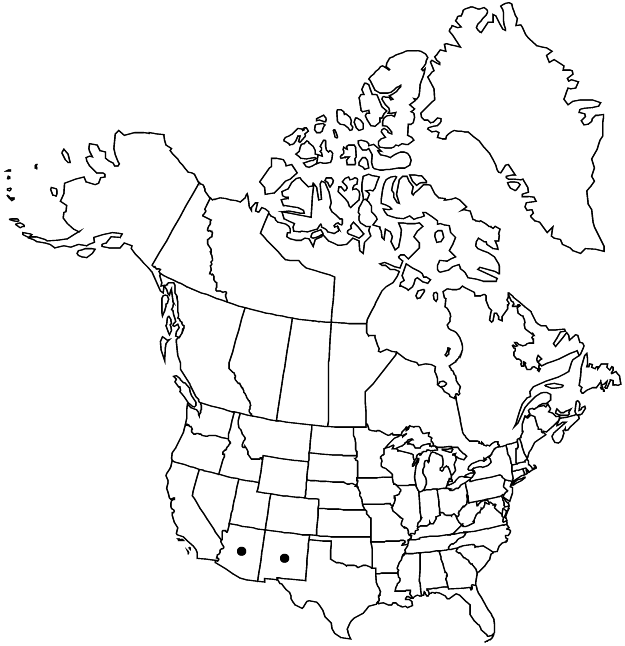Rumex nematopodus
Leafl. W. Bot. 7: 134. 1954.
Plants perennial, glabrous or nearly so, with fusiform, vertical rootstock. Stems erect, branched in distal 1/2, 40–85(–100) cm. Leaves: ocrea deciduous or partially persistent at maturity; blade oblong-lanceolate to lanceolate, 20–35 × 5–12 cm, base cordate to broadly cuneate, margins entire or nearly so, flat, apex acute or attenuate. Inflorescences terminal, occupying distal 1/2–2/3 of stem, interrupted in proximal 1/2, paniculate, branched. Pedicels articulated in proximal 1/3, filiform, 12–20 mm, 3–4 times as long as inner tepals, articulation weakly evident, not swollen. Flowers 10–20 in whorls; inner tepals ovate-triangular, 4–5(–6) × 3–4(–5) mm, base truncate to subcordate, margins entire, apex acute to subacute; tubercles absent. Achenes brown, 3 × 1.5 mm. 2n = 120.
Phenology: Flowering spring–early summer.
Habitat: Seasonally wet habitats along rivers and streams
Elevation: 2500-3000 m
Distribution

Ariz., N.Mex., n Mexico (Chihuahua).
Discussion
Rumex nematopodus has been reported from several localities in Arizona, New Mexico, and northern Mexico (K. H. Rechinger 1954). It is closely related to R. occidentalis, differing from that species in having longer pedicels and smaller inner tepals with acute apices. Those characters are highly variable in almost all species of the R. aquaticus aggregate, and the taxonomic status of R. nematopodus remains unclear.
Selected References
None.